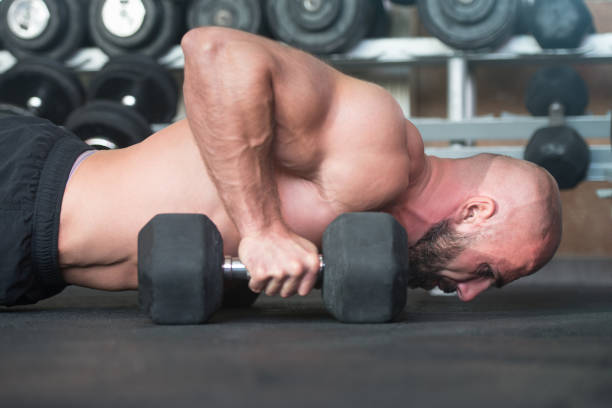Dumbbell Spider Curl
Struggling to build those mountainous bicep peaks? Time to start hitting the dumbbell spider curl my friend!
The dumbbell spider curl is an excellent exercise to isolate the bicep, ensuring no swinging or momentum is brought into the equation like often found during regular standing barbell or dumbbell curls.
I recommend hitting your heavy barbell and dumbbell curls first before burning out your biceps with the dumbbell spider curl as the last exercise in your arm workout.
Movement: Isolation
Targets: Biceps
Required: Dumbbells & Incline Bench
Optional: N/A
Dumbbell Spider Curl Form:
Grasp a dumbbell in each hand, lay down on an incline with your stomach resting against it (roughly a 45 degree angle).
Keep your arms at a dead hang in front of you.
Contract your biceps as you curl the dumbbells up towards your torso.
Squeeze at the top of the repetition for one second.
Lower the dumbbells in a slow and controlled manner until fully extended.
Repeat for the desired number of repetitions.
Dumbbell Spider Curl Variations
Barbell Spider Curl
Perform the spider curl grasping a barbell instead of a pair of dumbbells.
Here Are The ONLY Pair of Dumbbells I’ll Ever Recommend…
Bowflex SelectTech Adjustable Weights
Instead of buying multiple sets of dumbbells or messing around screwing weight plates on and off your dumbbells between sets and exercises the Bowflex adjustable dumbbell makes progressing with your routine and exercise so much easier and efficient.
Adjustable in 2.5lb increments all the way up to 52.5lbs per dumbbell, ideal for the beginner or intermediate gym-goer
You can invest in a pair of these dumbbells that’ll last you forever.
Common Dumbbell Spider Curl Mistakes
Swinging
Every guy in the gym wants to swing around heavy weight on biceps, I get that.
As I said earlier – if you want to build big arms you’re going to have to lift heavy, HOWEVER form always have and always will take priority over the weight being lifted.
The bottom portion of a bicep curl is without a doubt the hardest portion of the movement, and when lifting too heavy many gym-goers attempt to swing backwards or hip thrust to attempt to move the weight.
Using momentum to move the weight takes tension off the bicep, doing you no good.
If you’re swinging and swaying your back on every repetition you’re also placing your lower back at a high risk of injury – not good.
Pick a weight that’s heavy for you to perform with good form, save the cheat curls for Arnold.
Arm Training Frequency Too High
it didn’t take me long to realize that training my arms every single day wasn’t getting me very far in terms of results given all the effort I was exerting.
Train smart.
The biceps act as the secondary muscle group when we’re training back, and the triceps act as the secondary muscle group when we’re training chest.
Training chest, back and one dedicated arm day per week (or triceps and biceps split up onto seperate days instead) is more than enough to build big, strong arms.
More isn’t always better – if you’re training frequency is any higher than this you may very well be hindering your own progress, like all other muscle groups the biceps and triceps require time to recover.
Lifting Too Light
If you don’t generally train in the lower rep range I recommend you give it a try, stop lifting in the 10 – 15 rep range for at least a month and focus on heavy, low rep sets. Once you start to see results you won’t want to go back.
Now, you may still think high reps are beneficial, but let me tell you they’re far from it.
High repetitions result in increased stress on your CNS, increase in localized inflammation and increased soreness.
“Movements or exercises that do not give the muscle the required resistance, but are the kind that involve a great number of repetitions, never break down any tissue, to speak of. These movements involve a forcing process that cause the blood to swell up the muscle, and simply pump them up”– George F. Jowett, 1926
Similar & Substitute Exercises
- Barbell Spider Curl
- Dumbbell Incline Biceps Curl
- Chin-ups
